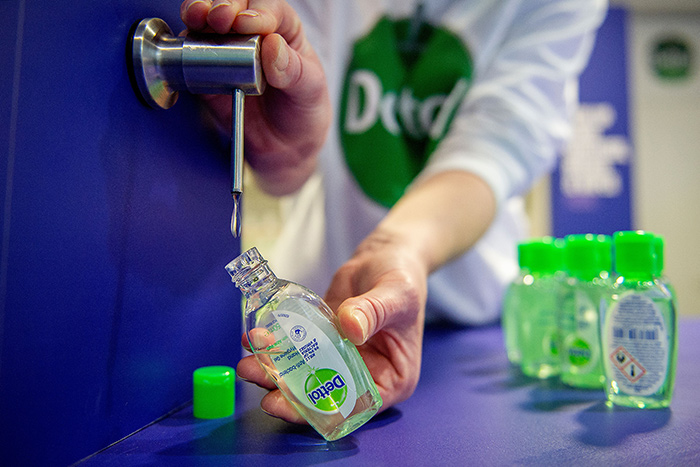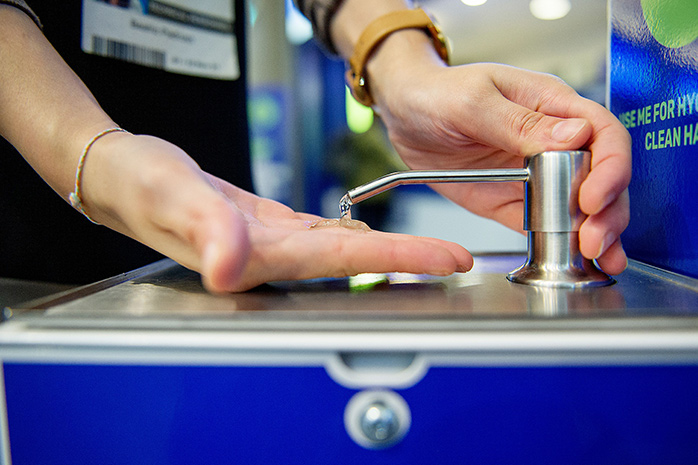Why ‘Conscious Cleaning’ Is The Future Of The Hygiene Industry Post-Pandemic
 By Dr. Lisa Ackerley, director of medical and scientific engagement, hygiene, at Dettol Pro Solutions.
By Dr. Lisa Ackerley, director of medical and scientific engagement, hygiene, at Dettol Pro Solutions.
Over the past two years, we’ve been given the chance to analyse, assess and adopt a new collective understanding of hygiene and health, hygiene for health, as well as the impacts and benefits of ‘conscious cleaning’ and hygiene.
Though the urgency of the pandemic has subsided, we appear to be looking at hygiene habits in a different way. How, then, are we applying these new hygiene habits?
Handwashing Habits

The pandemic has reshaped the way we wash our hands and our consciousness about handwashing habits. According to Reckitt research from June 2021, 56% of AUS people said that they washed or sanitised their hands ‘more frequently’ compared to 2020. Yet one in three (36%) said the frequency of handwashing or sanitising remained the same with 8% declaring they were doing it less1. What’s more, between October 2020 and October 2021, one in six were ‘unable to recall’ how often they washed their hands2.
With the overall heightened awareness of hand hygiene among staff and customers, sustaining and actively encouraging hand hygiene at key moments, for example on arrival at a destination - the front reception desk, at a meeting room or work area, and of course after using the toilet, should be top of the agenda for not only individuals, but also businesses. After all, hand washing can reduce the risk of gastrointestinal sickness by up to 31%3 and respiratory illnesses, like colds, in the general population by 16–21%4
Targeted Hygiene And Rigorous Research

Targeted hygiene shows us that as well as identifying the high touch areas, timing and frequency play an important role, for example focusing on increasing the frequency of cleaning and disinfection of high traffic areas and in some circumstances, cleaning and disinfecting areas immediately after use - for example when hot-desking or before or after using a meeting room. As the term suggests, the focus of a targeted hygiene programme is to clean and disinfect when and where it will be most effective. Simply cleaning at the end or start of the day may miss the point that spaces could continue to become contaminated throughout the day.
Conscious Cleaning And Hygiene
 As we slowly extricate ourselves from the pandemic, a return to normalcy will impact how people look at hygiene habits and standards. In an era where it’s necessary to keep the body fit and healthy, the concept of conscious cleaning and hygiene seems to be on the rise.
As we slowly extricate ourselves from the pandemic, a return to normalcy will impact how people look at hygiene habits and standards. In an era where it’s necessary to keep the body fit and healthy, the concept of conscious cleaning and hygiene seems to be on the rise.
There are many ways to practise hygiene consciousness, which could look like:
- Leaving the germs at the front door - sanitise your hands before you touch anything
- Taking action at key moments - for example after handling raw foods you need to clean and disinfect surfaces and utensils that may be contaminated, and wash your hands of course.
- Cleaning and disinfecting high touch points at key moments, rather than trying to clean everything all the time, you can save time, energy and resources.
A more thoughtful, bespoke approach to hygiene allows us to feel reassured that we’re practising the good hygiene habits instilled in us as a result of the pandemic, but with some degree of ‘normality’. Hygiene is not just for COVID - it is for life, so as we look to a post-pandemic landscape, it’s this balance which will help us to get back to enjoying the things we love, one step at a time.
For more information, please visit: https://www.reckittpro.co.uk/s
References:
1Winter Hygiene Habits, Reckitt, AUS 2021, n=1034
2Global RB Covid Tracker, n=1000, Jan 2021
3Aiello AE, Coulborn RM, Perez V, Larson EL. Effect of hand hygiene on infectious disease risk in the community setting: a meta-analysisexternal icon. Am J Public Health. 2008;98(8):1372-81.
4Rabie T, Curtis V. Handwashing and risk of respiratory infections: a quantitative systematic review. Trop Med Int Health. 2006;11(3):258-67.










































